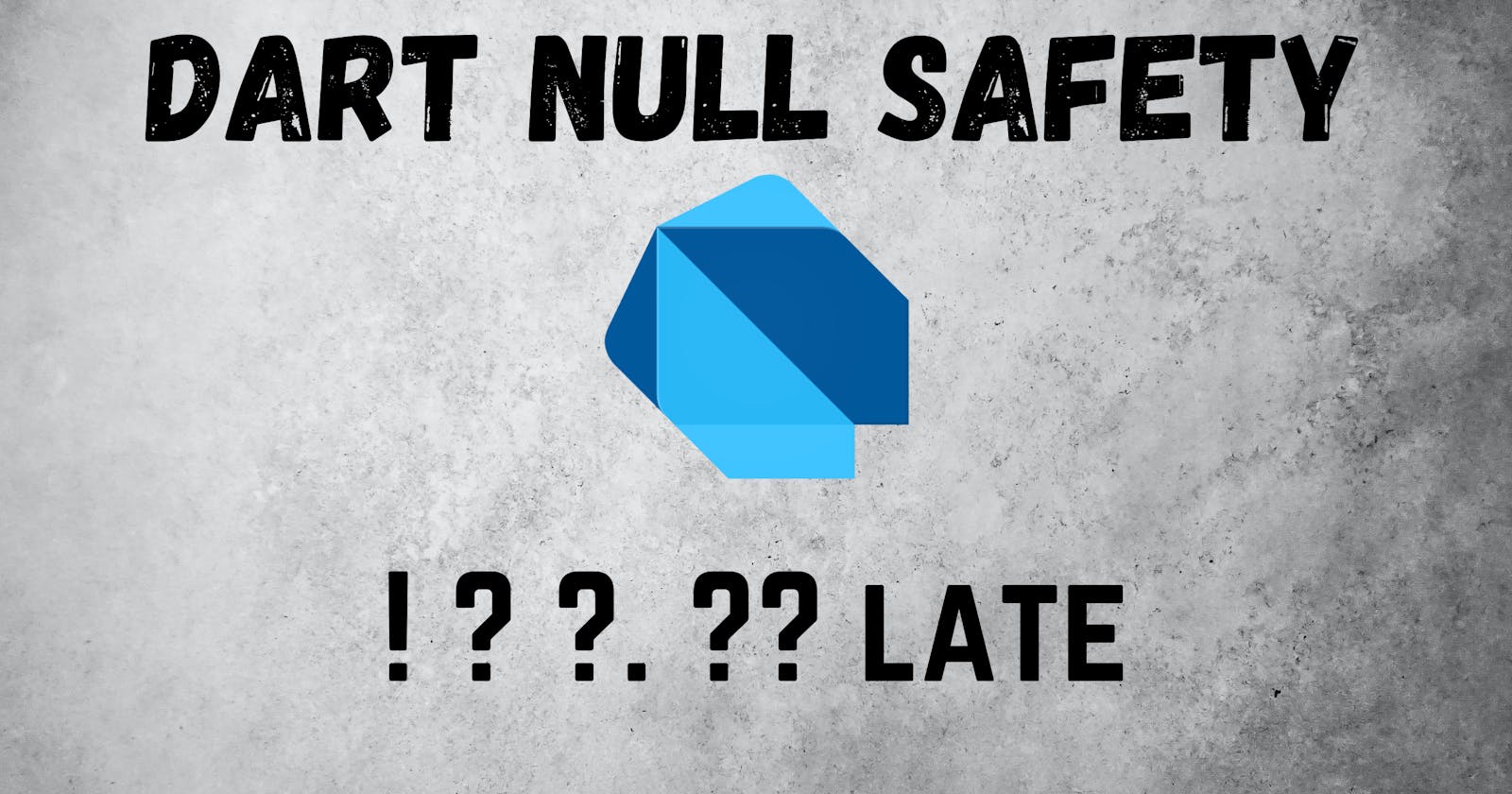Null safety is a crucial feature in modern programming languages, as it helps developers write more reliable and robust code. In the context of Dart-Flutter, null safety is a game-changer that simplifies the process of developing mobile applications by reducing runtime errors related to null references. This blog post will dive deep into null safety in Dart-Flutter, explaining the concepts, operators, and providing comprehensive examples to illustrate the power and benefits of this feature.
What is Null Safety?
Null safety is a programming language feature that helps prevent null reference errors. In traditional programming languages like Java or JavaScript, null references are a common source of runtime exceptions and crashes. Dart, the language used for Flutter app development, introduced null safety to tackle this issue effectively.
In Dart, every variable has a type, and those types can be either nullable or non-nullable. A nullable type means that the variable can hold null, while a non-nullable type guarantees that the variable always has a non-null value.
Null Safety Operators in Dart-Flutter
To make the most of null safety in Dart-Flutter, you need to understand the various operators and annotations used to work with nullable and non-nullable types. Let's explore them one by one.
1. Null-aware operators
a. ? (null-aware access):
The ? operator is used to access a member (method or property) of an object only if that object is not null. It prevents null reference errors by checking for null values before accessing the member.
String? nullableString = null;
String lengthOrNull = nullableString?.length.toString(); // Safe access; lengthOrNull is null
In the example above, lengthOrNull is assigned null because nullableString is null. Without the ? operator, this would result in a null reference error.
b. ?? (null-aware assignment):
The ?? operator provides a way to provide a default value if a value is null. It's particularly useful when dealing with nullable variables.
String? nullableString = null;
String nonNullString = nullableString ?? "Default Value"; // nonNullString is "Default Value"
In this case, nonNullString is assigned the default value "Default Value" because nullableString is null.
2. Non-nullable assertion operator
The ! operator is used to assert that a variable is non-null, even if its type is nullable. It tells the compiler to trust the programmer and not perform null checks.
String? nullableString = "Hello";
String nonNullString = nullableString!; // nonNullString is "Hello"
Here, the ! operator is used to indicate that the programmer is certain nullableString is not null.
3. Late Variables
Late variables are a way to declare non-nullable variables that are initialized later, allowing you to defer their initialization until runtime. This is useful when you have a variable that must be initialized after some conditions or calculations.
late String lateVariable;
lateVariable = "Initialized Later"; // Initialize the variable later
The Dart compiler will trust that lateVariable will be initialized before it is accessed, eliminating null safety warnings.
4. Type Annotations
Type annotations in Dart help specify whether a variable is nullable or non-nullable explicitly. These annotations can be applied using the ? and ! operators.
String? nullableString = null; // nullableString is explicitly declared nullable
String nonNullString = "Hello"; // nonNullString is non-nullable by default
String nonNullStringWithAnnotation = nonNullString!; // Explicitly marked as non-nullable
Benefits of Null Safety in Dart-Flutter
Null safety in Dart-Flutter offers several advantages that make app development more reliable and efficient:
1. Reduced Null Reference Errors
By distinguishing between nullable and non-nullable types, null safety dramatically reduces the chances of encountering null reference errors, which can crash your app.
2. Improved Code Quality
With null safety, code becomes more self-explanatory and less error-prone, leading to cleaner and more maintainable code.
3. Better Documentation
Null safety encourages developers to document the intention of variables more explicitly, making code easier to understand for other team members.
4. Enhanced Code Readability
The use of null-aware operators and explicit type annotations makes code more readable and less ambiguous.
5. Migration Path
Dart provides tools and guidance for migrating existing codebases to null safety, allowing developers to transition gradually.
Migrating to Null Safety
To enable null safety in your Dart-Flutter project, you need to use Dart 2.12 or higher and follow the migration steps outlined in the official Dart documentation.
Conclusion
Null safety is a significant step forward in Dart-Flutter development. It helps prevent null reference errors, improve code quality, and ultimately enhances the reliability and maintainability of your mobile applications. Understanding and embracing null safety in your Flutter projects is essential for writing robust, efficient, and user-friendly apps. With the comprehensive guide and examples provided in this blog, you're now well-equipped to leverage null safety to its full potential in your Dart-Flutter projects. Happy coding!
